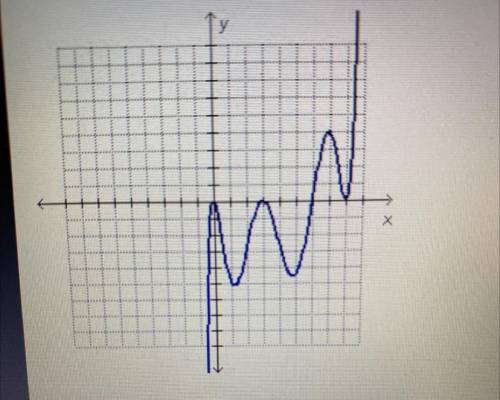
Mathematics, 03.09.2021 19:20 couscous5307
Let a, b, and c be real numbers where a≠b≠C≠0.
Which of the following functions could represent the graph below?
f(x) = x^2(x-a)^2 (x-b)^4 (x-c)
f(x) = x^3(x-a)^3 (x-b) (x-2)^2
f(x) = x^4(x-a) (x-b)^3 (x-c)^3
f(x) = (x-a)^2 (x - b) (x-c)^6


Answers: 1


Another question on Mathematics


Mathematics, 21.06.2019 23:30
Which equation represents a direct linear variationa. y=x2b. y=2/5xc. y=1/xd. y=x+3
Answers: 3

Mathematics, 22.06.2019 00:00
This circle is centered at the origin, and the length of its radius is 6. what is the circle's equation? a. x^2+y^2=36 b x^2+y^2=6 c x+y=36 d x^6+y^6=1
Answers: 2

Mathematics, 22.06.2019 01:00
Which of the following statements is true? a. the irrational number system is not closed under multiplication, because the product of two irrational numbers is always a rational number. b. the irrational number system is not closed under multiplication, because the product of two irrational numbers is not always an irrational number. c. the irrational number system is closed under multiplication, because the product of two irrational numbers is always an irrational number. d. the irrational number system is closed under multiplication, because the product of two irrational numbers is always a rational numbers. reset submit
Answers: 1
You know the right answer?
Let a, b, and c be real numbers where a≠b≠C≠0.
Which of the following functions could represent th...
Questions

Chemistry, 13.07.2019 00:00



Social Studies, 13.07.2019 00:00


Biology, 13.07.2019 00:00

Health, 13.07.2019 00:00

Chemistry, 13.07.2019 00:00



Geography, 13.07.2019 00:00

Chemistry, 13.07.2019 00:00

Mathematics, 13.07.2019 00:00

History, 13.07.2019 00:00


Physics, 13.07.2019 00:00



Physics, 13.07.2019 00:00

Biology, 13.07.2019 00:00




